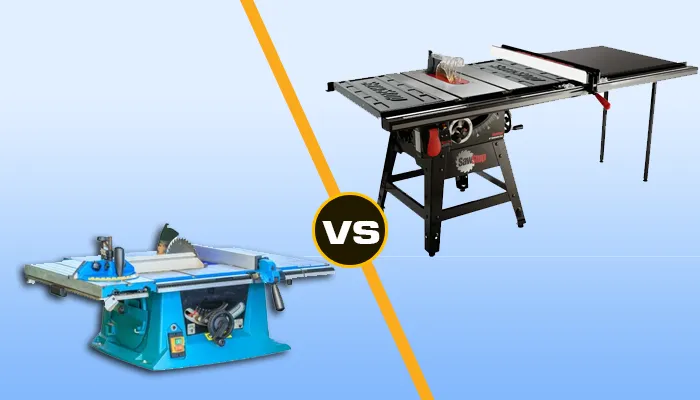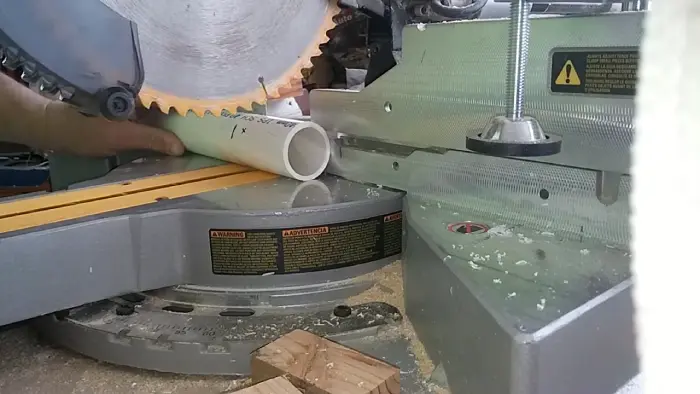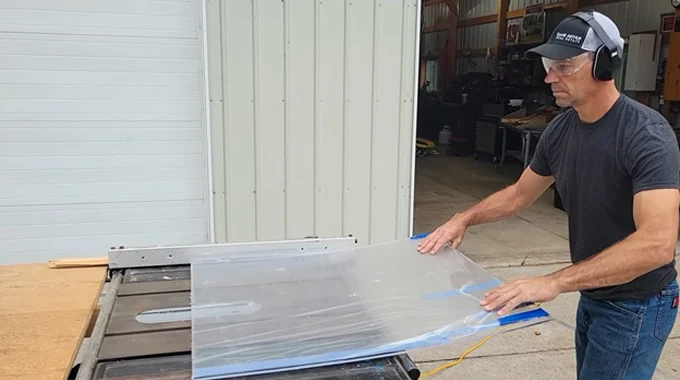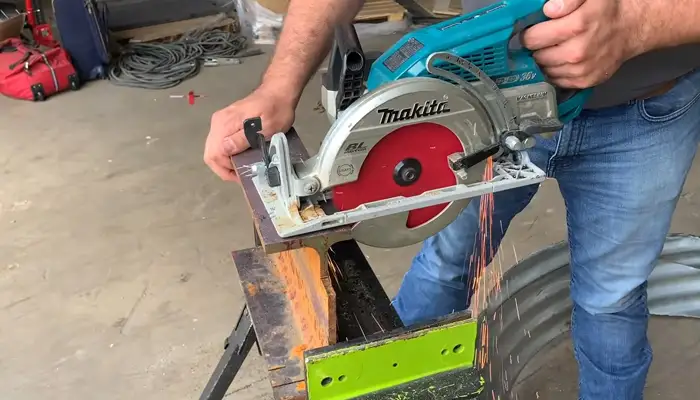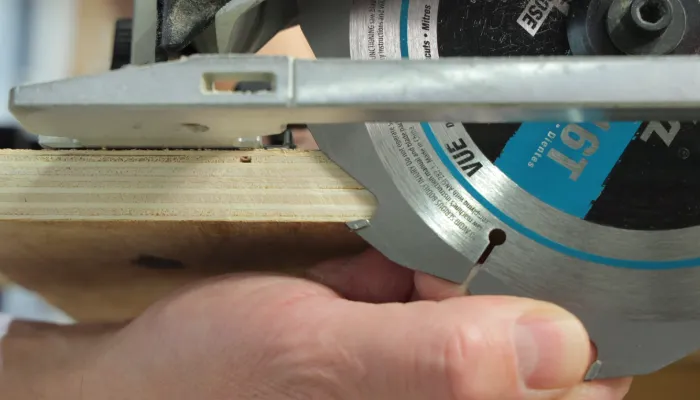Difference Between Table Saw and Cabinet Saw: 8 Points
In the world of woodworking, the choice between a wood-cutting table saw and a cabinet saw is a crucial decision that significantly impacts the outcome of projects. Each type of saw brings unique features and advantages to the crafting table, catering to the different needs and preferences of woodworkers.
According to my studies, table saws prioritize portability and versatility, making them ideal for on-the-go job sites and various woodworking projects. Conversely, cabinet saws feature powerful motors, larger tables, and a raised platform design, emphasizing stability and precision for intricate woodworking projects.
I know your thoughts: why bother with a wood-cutting table saw when a cabinet saw seems obvious? Well, let me tell you, there are some key differences between these two types of saws that you need to know.
- Compact Design for Easy Transport
- Rack and Pinion Fence Adjustments
- Professional 24.5″ Rip Capacity
- Site-Pro Modular Guarding System
- Power-Loss Reset and On-Board Storage
- Patented Skin-Sensing Safety System
- 52-Inch T-Glide Fence Assembly
- 3-Horsepower, Precision Engineered Motor
- 99% Dust Collection Efficiency
- Heavy-Gauge Steel Construction
8 Differences Between Table Saw and Cabinet Saw
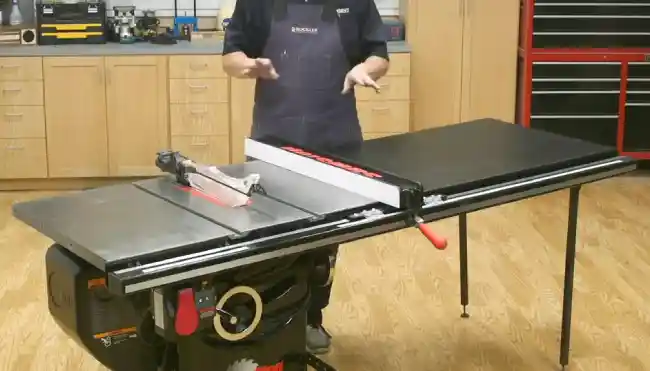
As far as I know, several key points must be considered when comparing wood-cutting table saws and cabinet saws.
- Motor power and output
- Motor position and construction
- Cutting capacity and precision
- Dust collection capabilities
- Weight and portability
- Space requirements
- Vibration dampening
- Cost and affordability
No 01: Motor Power and Output
Table saws typically come equipped with smaller motors, ranging from 1.75 to 2 horsepower. The table saw motors provide sufficient power for various cutting tasks, making table saws versatile tools for various applications.
In contrast, Cabinet saws boast larger motors, usually in the range of 3 to 5 horsepower. The increased power output of cabinet saws enables them to handle more substantial wood pieces effortlessly, delivering enhanced cutting performance for professional woodworking projects.
No 02: Motor Position and Construction
The motor position is another key distinguishing factor between these two types of saws. Several table saws have motors in an open base below the table’s surface.
On the other hand, cabinet saws take a different approach by housing the motor inside a fully enclosed casing that rests lower on the frame. I think this difference in motor placement contributes to the notable weight disparity between the two saw types.
Due to their sturdy and enclosed construction, Cabinet saws are considerably heavier, providing enhanced stability during operation.
No 03: Cutting Capacity and Precision
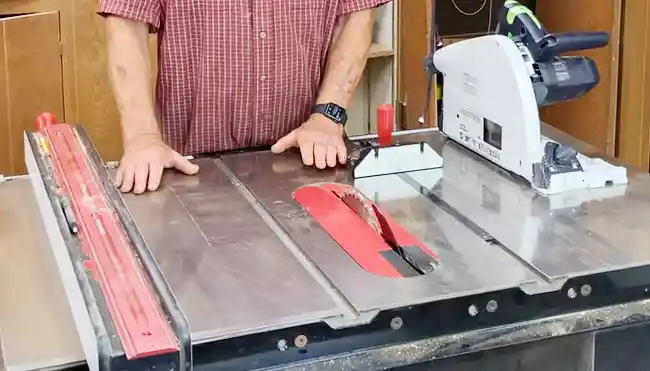
With flat work surfaces, table saws have a limited cutting capacity compared to cabinet saws. This limitation makes them less suitable for handling larger or thicker boards.
Alternatively, equipped with raised platforms, cabinet saws can effortlessly handle more extensive pieces. This increased cutting capacity allows for the precise cutting of larger materials.
No 04: Dust Collection Capabilities
Moving on to the dust collection capabilities, I found a significant difference between wood-cutting table saws and cabinet saws.
Table saws generally lack comprehensive dust collection systems as standard features. Even if available, these systems often prove less effective due to the motor’s location beneath the working surface, which hinders airflow during operation.
In contrast, cabinet saws offer raised platforms that facilitate better connectivity with vacuum cleaners. This results in more efficient removal of fine particles from the working area.
The divergence in dust collection capabilities underscores the varying levels of convenience and cleanliness offered by the two types of saws during woodworking tasks.
No 05: Weight and Portability
Table saws are designed with mobility in mind, making them ideal for job sites or contractors who frequently need to transport their equipment. These saws typically weigh between 69 and 100 pounds, making them easier to carry and maneuver.
Alternatively, cabinet saws are much heavier, weighing up to 450 pounds when fully assembled. This weight results from their larger size and sturdier construction, which provides stability and support for heavy-duty cutting tasks.
While cabinet saws may not be as portable as table saws, their weight ensures a solid and secure foundation for accurate and precise cuts.
No 06: Space Requirements
As I know, table saws have a more compact design, which means they demand less space for operation.
On the other hand, cabinet saws are designed with wider wings that extend from the main body, resulting in a larger footprint. This increased area is advantageous for attaching accessories like miter gauges and fences. However, it also means that cabinet saws occupy more space in the workshop.
No 07: Vibration Dampening
With its heavier construction and enhanced stability, the cabinet saw provides superior vibration dampening compared to the wood cutting table saw.
The increased weight of the cabinet saw helps to minimize vibrations by providing a more solid and stable platform for cutting. Additionally, many high-end cabinet saw models incorporate dampening mechanisms, such as rubberized feet or specialized motors, that further reduce vibrations to a minimum.
These mechanisms work by absorbing and dissipating the energy generated by the saw, resulting in a smoother and more precise cutting experience.
In contrast, with lighter construction, wood-cutting table saws are more prone to vibrations, which can affect the accuracy and quality of cuts. Therefore, if vibration dampening is a priority, the cabinet saw is the superior choice.
No 08: Cost and Affordability
Table saws, particularly job site and contractor models, are generally more cost-effective, making them suitable for a wider range of users. These models are designed to be portable and versatile, making them ideal for on-site projects.
On the other hand, cabinet saws are typically more expensive due to their larger size, powerful motors, and additional features. These saws are built with stability and precision, making them more suitable for professional woodworkers and those with specific woodworking requirements.
The cost disparity between table and cabinet saws allows users to make informed decisions based on their budget and the level of performance they require.
Can a table saw handle larger wood pieces like a cabinet saw?

Although a table saw may struggle with larger wood pieces, a cabinet saw is designed to handle them easily. The main difference lies in their respective designs.
According to my findings, a table saw typically has a small table and a limited cutting capacity, making it difficult to work with larger pieces of wood. On the other hand, a cabinet saw features a larger table and a more powerful motor, allowing it to handle larger and thicker wood pieces effortlessly.
Is a table saw better than a circular saw?
While a circular saw offers more flexibility regarding the types of cuts it can make, a table saw excels in producing smooth, straight cuts in plywood and wood.
The stability and precision a table saw provides make it an ideal choice for projects requiring multiple identical cuts. Additionally, a table saw allows for the use of various accessories, such as miter gauges and sleds, which further enhance its cutting capabilities.
However, it’s worth noting that a table saw is limited in its ability to cut materials like metal or concrete, which is where a circular saw shines.
Can a cabinet saw handle both large workpieces and intricate cuts?
I can attest that a cabinet saw can easily handle large workpieces and intricate cuts.
The raised platform design provides ample space to accommodate sizable wooden workpieces, ensuring stability and accuracy during cutting. The powerful motor of a cabinet saw allows for smooth and effortless cutting through thick materials, making it ideal for handling large projects such as furniture pieces.
Additionally, a cabinet saw’s precise control and adjustable features enable the user to make intricate cuts with high precision. Whether creating intricate designs for cabinetry or working on detailed woodworking projects, a cabinet saw offers the versatility and precision required to achieve excellent results.
Are there specific safety features unique to cabinet saws?
Cabinet saws offer unique safety features that enhance user confidence and minimize potential risks. One such feature is the blade guard, designed to protect the user from coming into direct contact with the spinning blade.
This guard is typically made of a transparent material, allowing the user to see the cutting action while keeping their hands and fingers safe.
Another important safety feature found in cabinet saws is the riving knife. This device is positioned behind the blade and prevents the workpiece from pinching the blade during cutting. The splitter and riving knife help prevent accidents and injuries by reducing the risk of kickback.
Additionally, cabinet saws often come equipped with sophisticated braking systems. These systems are designed to stop the blade’s rotation quickly in an emergency or when the user releases the power switch. This rapid stopping capability further enhances user safety and reduces the risk of injury.
Table Saws vs Cabinet Saws: Which One is Right for You?
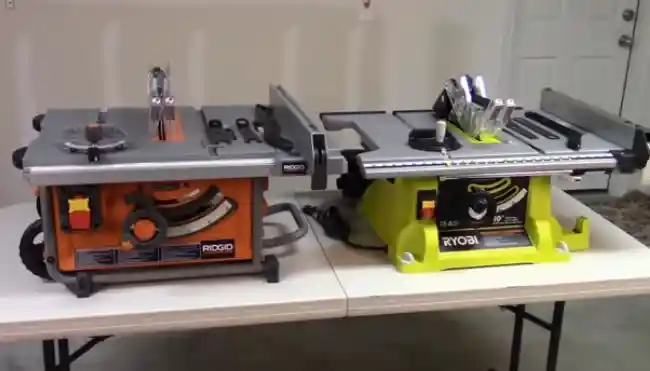
As you can see, when comparing wood-cutting table saws and cabinet saws, it’s clear that both have their advantages and limitations.
While table saws can’t handle larger wood pieces like cabinet saws, cabinet saws offer the ability to handle large workpieces and intricate cuts. Additionally, cabinet saws often come equipped with specific safety features I have not found in table saws.
Therefore, I prefer cabinet saws for tasks requiring meticulous accuracy, such as fine cabinetry and furniture. Their raised platforms and specialized construction ensure that cabinet saws deliver higher precision than table saws. Alternatively, you can use table saws for their portability and lighter weight than cabinet saws.
- Worm Drive Power for Maximum Torque
- Precision Rack and Pinion System
- Compact and Lightweight Design
- Dual-Field Motor for Extended Use
- Durable All-Metal Construction
- Beveled edge for smoother operation.
- Reduces vibration, maximizes efficiency.
- Easy adjustment for a full range.
- Minimal tools needed.
- Provides rigidity and precision.
Last update on 2026-01-02 / Affiliate links / Images from Amazon Product Advertising API

